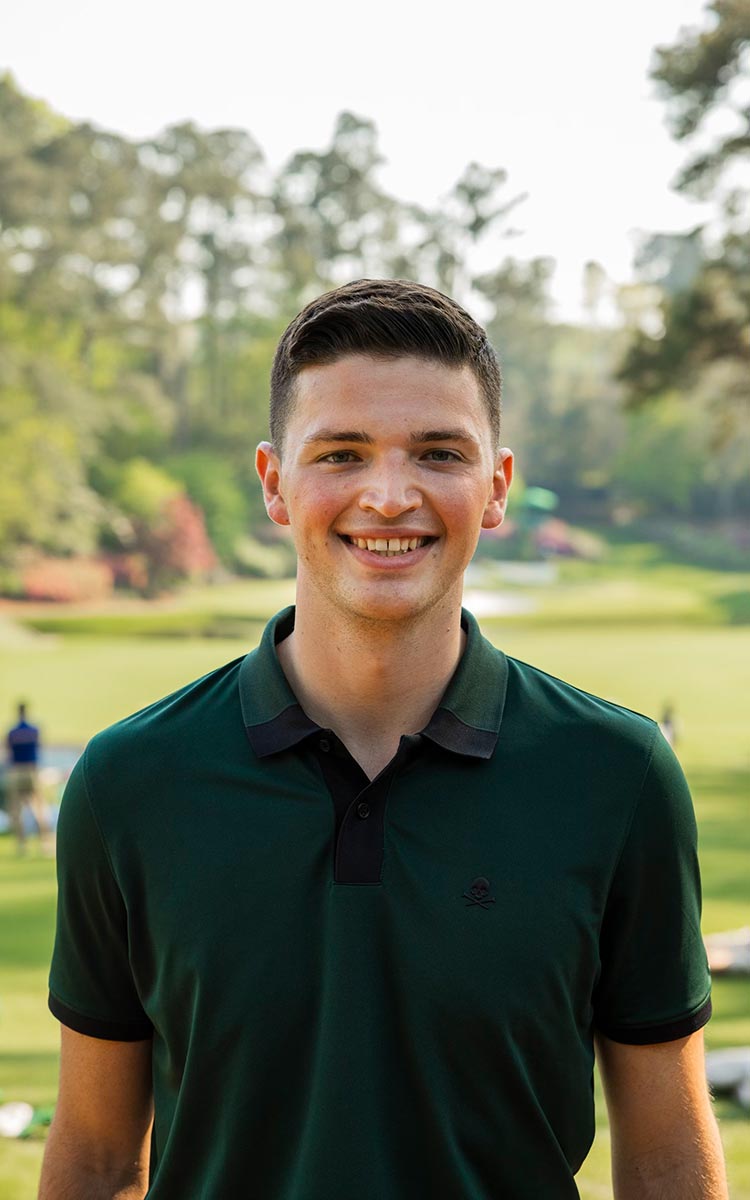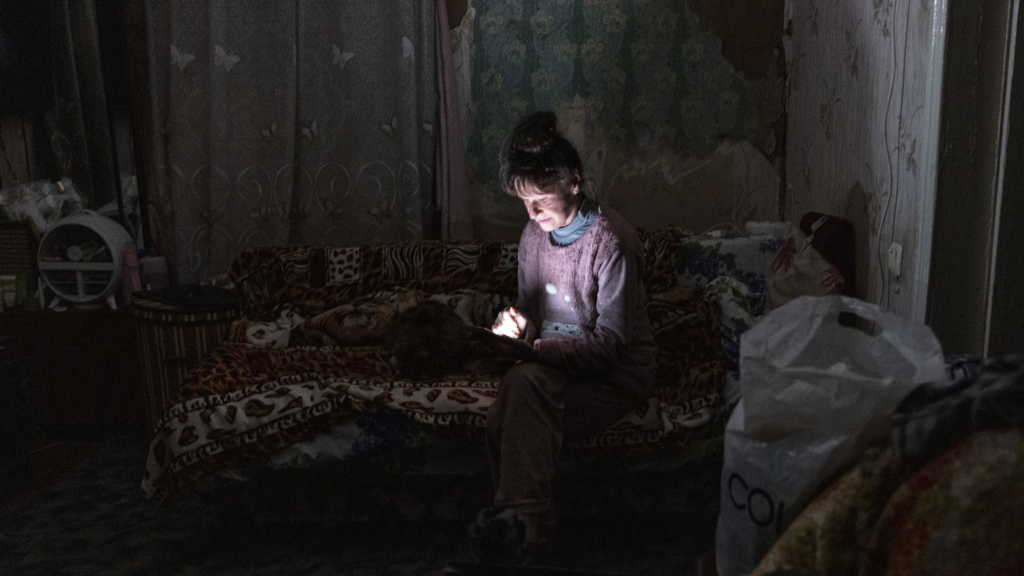James Colgan
Ken Griffey Jr. is serving as one of the Masters’ photographers.
Getty Images
AUGUSTA, Ga. — Ken Griffey Jr. steadied himself as he stood just above the 2nd green at Augusta National.
He’d arrived in this location — fifteen paces to the left of the flag — just seconds earlier, carrying a pair of enormous blunt instruments and the indomitable focus of a bomb technician. Beneath him, Justin Thomas tiptoed into a stark-white greenside bunker and disappeared below the lip.
Then, suddenly, a flurry of action broke out before him, and Griffey plunged forward — holding his breath, training his eye, and then, finally, pulling the trigger.
If you’d like to understand what compelled the owner of 630 home runs into sports photography, you needed only these 15 seconds on Masters Saturday. The action at the intersection of anticipation and focus? The game-within-the-game between man and subject? The opportunity to make art from violence? As it turns out, Ken Griffey Jr. is still good at those things. The venue might have changed, but he never stopped hitting meatballs.
The journey from 13 All-Star Games to the photo room at the Masters was surprisingly simple on Saturday morning. Griffey rose early in a hotel room, drove to tournament grounds, collected an assignment from his editor, Bob Martin, and set out onto the golf course for the day. He carried a Sony Alpha 1 camera body with two large lenses, a 400mm and 600mm. He did not eat.
He tries to keep a low profile on the golf course, though that is occasionally difficult on account of his fame. Thanks to thick ropes of muscle extending from his shoulders to his wrists, Griff’s version of 6-foot-3 feels particularly terrifying, but he speaks with a soft understatement and a sharp wit.
On Saturday, he wore a sleeveless black jacket over a black polo, with black pants and a white hat. He traveled with a Masters content staffer, who himself was armed with a backpack filled with batteries, memory cards and a monopod. When he wasn’t being interrupted by a patron, Griffey was quiet and serious — and carried himself at least a little bit sheepishly.
“Realistically, I’m the low man on the totem pole,” he said Saturday morning. “I’m still picking it up. If you’re not willing to learn then your pictures aren’t going to get any better.”
Griffey, now 55, was well into his career in front of the camera when he stepped behind it for the first time. He started shooting photos shortly after his 35th birthday, and largely due to the onslaught of well-wishers who began to distract from his children’s sporting events. His children Trey and Tevin — both boys — were never issues, but his daughter Taryn was different.
“Boys look for Mommy,” he said. “But girls look for Dad. They want to make sure Dad is paying attention.”
Griffey knew the feeling. His father, Ken Sr., had spent most of his son’s childhood playing Major League Baseball, only attending 10 of Ken Jr.’s games during his formative years. Now The Kid was a famous ballplayer himself — and seeing the cycle continue.
“It was my fault,” he said. “I understood how getting that father approval was important, because I wanted it. I wanted my dad to see me, and sometimes it happened, but most of the time as a kid it didn’t.”
He tried out photography for his family, but he quickly found he liked its careful waltz. He enjoyed photographing cars, and learned action photography from attending races. When a friend in Orlando with a connection to the Masters learned that Griffey had also picked up golf, he reached out to Augusta National, who quickly extended The Kid a job offer. It was the most enticing job opportunity of Griffey’s post-playing life, but he paused before accepting it.
“When you hear you’re going to shoot at the Masters, you want to say yes real quick,” he said. “But then you’re like, ohhh, I’m gonna need to work on some things.”
He arrived nervously. Griffey had stipulated that he did not want to be treated any differently from the rest of the photographers in the photo pen, and Augusta National agreed. The problem was that the photo pen was a murderer’s row of the greatest sports photographers alive. Griffey was a glorified amateur — and he felt it.
“It doesn’t matter your status in life, if it’s something you don’t do professionally and everybody here is a professional, you’re still nervous to walk in the room,” Griffey said. “How would these guys feel if we all got into a batting cage, and I was sitting there critiquing them? It’s the same thing.”

Ben Jared
The first few days were a challenge. At Griffey’s urging, Martin treated him no differently than any other Masters photographer. He was assigned a stall in the press center, and given the same photo restrictions assigned to every other tournament shooter. Martin delivered real assignments each day, and was unafraid to deliver unflinching criticism — or outright rejection — to Griffey’s photos.
“The one thing I learned about is backgrounds,” Griffey said. “Your backgrounds are crucial. If you have a great background and your subject is in there, you’re gonna have a great picture. If you have a great photo in the foreground but your background is blown out, you don’t have a great picture.”
It didn’t help that Griffey was, by any objective measure, not a normal photographer. He was flocked by fans everywhere he went, be they sportswriters in the press building or patrons at Amen Corner. He handled each interaction with grace, but it was not hard to see the challenge of receiving back-pats from 30,000 dudes in green hats while still managing to deliver world-class photos.
As the week wore on, though, Griffey Jr.’s confidence grew. He grabbed a brilliant shot of Bernhard Langer’s embrace with his wife from off the side of the 18th green on Friday — he was in “perfect position” — that was quickly uploaded to the Masters’ website. From the side of the 2nd hole on Saturday morning, his goal was no longer to get a good shot, but a great one.
“I’m gonna be on top of the bunker, straight over it,” he said. “Bob wants green, and he wants white, from the sand coming out of the bunker.”
He paused.
“So that’s what we’re gonna get.”

Ken Griffey Jr.
As we spoke on Saturday morning, I was struck by Griffey’s humility. He would not be the best photographer at Augusta National. In fact, he might very well be the worst, but there was no shame in that. He was here to learn, to get better, to try.
It helped Griffey’s ego that he’d made more money than God and attended half as many All-Star Games as years I’d walked the planet, but in some ways that was exactly the point. It’s hard and mostly terrifying to be vulnerable even when you’re gifted the grace of anonymity — it’s much harder and scarier when you’re not.
When I asked Griffey about this, he seemed confused.
“I mean, I’ve been this way since I was a little kid,” he said. “I learned how to fly a plane. I got my pilot’s license at age 36. I learned to scuba at age 30. You owe it to yourself to go out and find something you love, and you have to be willing to start somewhere.”
Suddenly, it occurred to me that Griffey’s Masters commitment might be much deeper than photography. The reason he’d thrust himself headlong into the masses at Augusta National wasn’t about taking photos, but about scratching a much deeper itch.
“I try not to let my kids beat me in anything,” he said with a grin. “So yeah, I’m still competitive.”
Competitive in what, I asked.
“Golf, tennis, pickleball — whatever,” he said. “It’s not about athletic greatness. The competitiveness is the fun part.”
I laughed at the earnestness of Griffey’s comment then, and again three hours later, when I found him charging into Amen Corner after Hideki Matsuyama.
As Matsuyama walked for the tee box on the par-3 12th, I watched as Griffey lept into action — slipping around the trees down the right ropeline, past scores of ogling fans, and into the photographer’s pen. He looked calm, comfortable, and … was that a hint of determination?
He dropped down to a knee as he framed his shot, his white Nike hat bobbing slightly above the crowd, until everything went quiet and still.
And then, on the most famous hole in golf, Ken Griffey Jr. squeezed the trigger and tried again.

James Colgan
Golf.com Editor
James Colgan is a news and features editor at GOLF, writing stories for the website and magazine. He manages the Hot Mic, GOLF’s media vertical, and utilizes his on-camera experience across the brand’s platforms. Prior to joining GOLF, James graduated from Syracuse University, during which time he was a caddie scholarship recipient (and astute looper) on Long Island, where he is from. He can be reached at james.colgan@golf.com.

